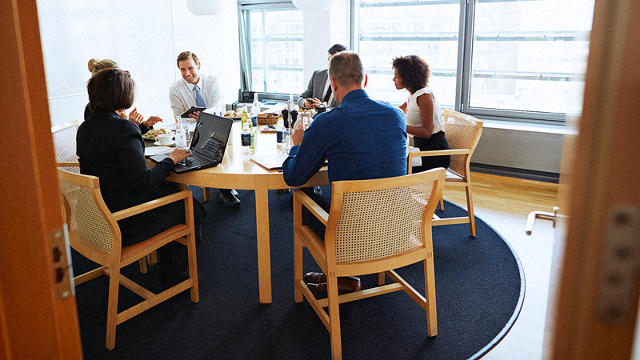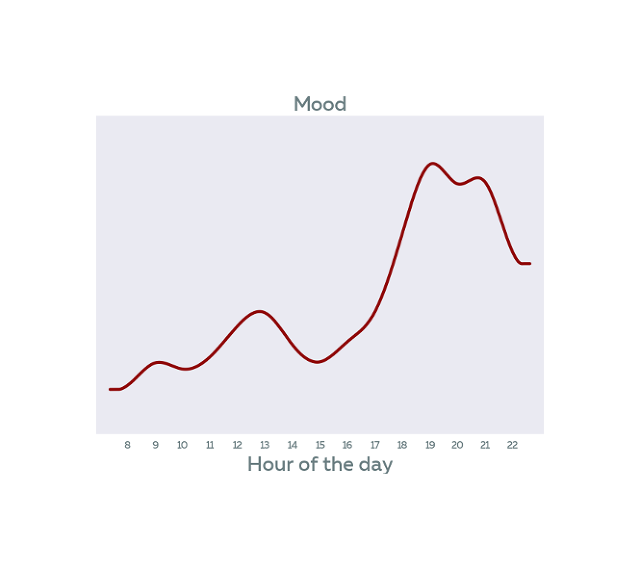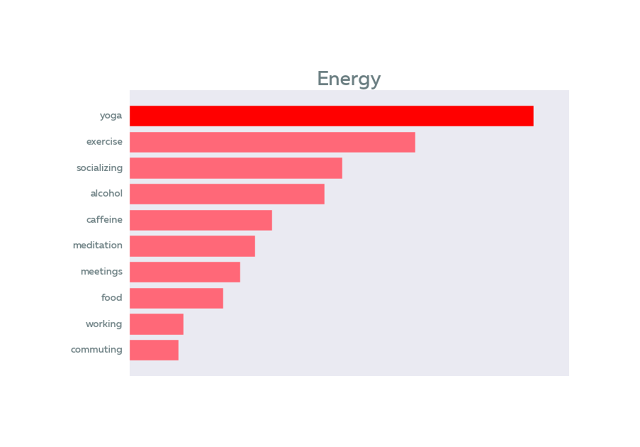You Can Design A Happier Office Culture. Here’s How
In the 1960s and ’70s, the psychologist Mihaly Csikszentmihalyi gave pagers to study subjects, ranging from motorcycle gang members to sheepherders. When the pagers buzzed, the participants’ job was to record their happiness levels. These studies ushered in the modern era of happiness research (and gave birth to an idea you’ve probably heard about—the times when productive hours float by like minutes in “flow“).
Recently, the smartwatch company Pebble built an app that did largely the same thing—except thanks to its install base, the scale was massive, with 10,000 people recording their moods and energy levels over the course of the week. The study is no doubt biased toward the tastes of Pebble users—youthful urbanites who readily adopt wearable technology—but the statistically significant findings support several previous studies. We tapped Susan Holcomb, head of data at Pebble, to walk us through the findings, and offer her best back-of-napkin advice on how we might exploit them to design happier, more productive workplaces.

Replace Your Meeting With A Lunch Meeting
If you’ve ever felt miserable sitting with colleagues around a conference table, you aren’t alone. Because in someone’s entire day, at home or work, “people were saddest when they were in meetings,” says Holcomb. “The meetings-driven culture is really toxic. It’s not just because meetings are unproductive, it also creates stress around people.”
Some workplaces have recognized the problem. They have relaxed seating arrangements, rather than big boardrooms, for people to chat casually rather than meet formally. Others arrange complete, meeting-free days, scheduled every week.
Holcomb offers up another alternative: to mix the most miserable part of your job (the meeting) with one of the happiest parts of your day (lunch).

Lunchtime and 7 p.m. are, quite depressingly if you think too much about it, the times people report as their happiest parts of the day. But Holcomb suggests that taking your lunch hour and making it a lunch meeting might neutralize the misery. “There’s probably not a [strict] mechanism to this,” says Holocomb, “but maybe lunch is going to lunch with a coworker, so you’re talking about ideas for your job.”
Incorporate Exercise—Or Yoga—In The Afternoon
From 1 p.m. to 4 p.m., people report a cascading slump in energy, which is why it can be so hard to stay productive in the afternoon.

Holocomb thinks it’s a good time to try yoga or general exercise, both of which gave study participants more energy directly following the activity—and a greater boost than reported from caffeine. In this regard, there may be something to all those Valley-style businesses that host yoga classes on-site. There’s just one catch: “Some of the perks we’re familiar with in Silicon Valley can work if you can get people motivated to take advantage of them,” says Holocomb. “I think it’s important to have some mechanism to allow people to get motivated in that.” In other words, it’s one thing to host a yoga class at 2 p.m. It’s another to properly encourage employees to go. It’s worth it though—people didn’t just report more energy after yoga, they were happier, too (an effect that has been shown in other studies).
Keep The Keg, But Don’t Tap It Until 5 p.m.
In terms of happiness, alcohol offered the single, greatest boost in people’s day—outpacing yoga, exercise, and socializing. “It is maybe not the message Pebble wants to promote, but it makes sense—alcohol brings a sense of euphoria,” says Holocomb. “It’s a short-lived but real thing.”

So there really is something to the idea of a “happy hour.” Note that happy hours don’t start at noon. They’re an end-of-day thing. Alcohol may boost your mood in the short term, but it also sucks your energy (and, of course, it isn’t associated with long-term happiness).

Create Coffee Dates For Relationships To Thrive
“Social events” also ranked high on the list of when people reporting being happiest. Overall activities like yoga ranked higher than socializing, but when Holocomb looked at the data of individuals, many were at their happiest interacting with people they liked.
“The biggest driver for happiness is about relationships. You can have all the organized yoga activities at your workplace you want, but if you don’t have a culture fostering positive relationships between different people working there, you’re not going to see the kinds of results you want,” says Holocomb. “That’s nebulous feedback, but one of the most surprising things to me was how important relationships are. Given that we spend the bulk of our time at work, fostering good relationships is critical.”
But how? Aren’t friendships with colleagues easier said than done? Maybe not. Holocomb, ever the data scientist, actually came up with a clever way to foster person-to-person relationships when her team suddenly expanded and everyone was working with strangers. She built a scheduler into the company’s database that would pair people on her team up randomly to go get coffee together.
“It really made us feel more connected,” says Holocomb. “People would get that chance to go talk about things that had no relation to work at all, but people built relationships.” Indeed, if we’re all going to have to work our lives away, anyway, we might as well enjoy the company we keep in the process.
(19)


